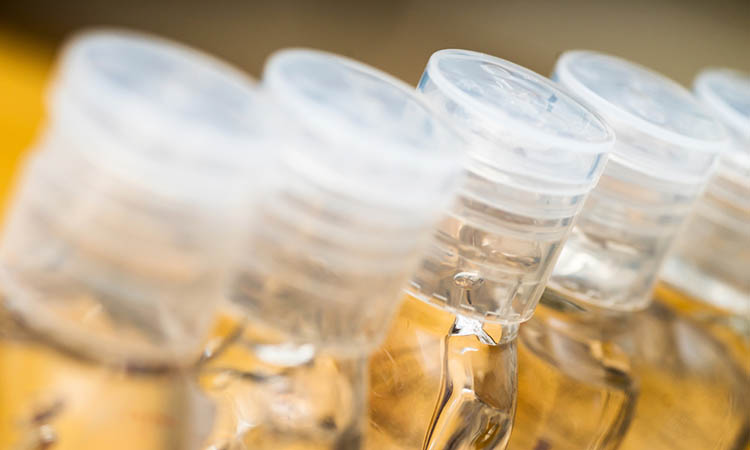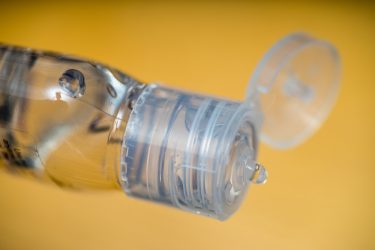Production of hand sanitiser – consideration and tips for manufacturers
Posted: 23 November 2020 | Robert Bussey (BPE) | No comments yet
The top considerations for hand sanitiser manufacturers in the UK are outlined in this article by Robert Bussey.


Across Europe, employers are becoming increasingly aware of their responsibility for the health and safety of their employees – particularly as there are more people returning to the office. As such, they have started to introduce more equipment such as personal protective equipment (PPE) or hand sanitiser stations and as a result, demand for both has significantly increased. For companies that are in a position to adapt and thrive to this new demand, there is a great capital gain to be had.
However, any companies with a new formulation must be authorised to be placed on the market. Furthermore, other regulations in the manufacturing process will need to be considered, especially in the use of flammable alcohols and the increase risk of fire.
Here, we offer some insight into some of the safety issues that need to be considered for hand sanitiser production companies in the UK.
The first step for hand sanitiser production
Carry out a risk assessment as this will form the basis of all UK safety legislation and provide an ideal way of approaching your new venture. Smaller operations may be able to use a simple one-size-fits-all risk assessment template, however different types of hazards often benefit from specific risk assessment templates.
DSEAR
You will need to comply with the Dangerous Substances and Explosive Atmospheres Regulation (DSEAR) regulations. Even when diluted, ethanol is likely to be flammable. While there are a number of requirements, the principles are relatively straightforward:
- Identify sources of release – where will flammable vapours exist? Material transfers, spills, leaking outlet valves etc
- Define the extent of the flammable atmosphere – this is typically achieved by following standards and within Europe this is dictated by IEC 60079-10-1
- Identify potential ignition sources – BS EN 1127-1 lists 13 possible ignition sources, although many of these will not apply to small-scale production units
- Assess the risk – risk is defined as the combination of consequence and likelihood, so how big is the extent of your flammable atmosphere and what is the chance of it encountering an ignition source?
Material storage of hand sanitiser ingredients


Do not forget it is not just raw materials that are flammable. Depending upon your formulation your products may also be flammable, so ensure there is sufficient separation between final product and raw materials.
Fire safety
Fire safety is regulated under the Regulatory Reform (Fire Safety) Order 2005 and differs from DSEAR in that it applies more broadly. There are a number of aspects that you need to consider:
- Prevention – look at strategies to minimise combustible and flammable material as this is even more important considering the flammable nature of alcohols. Work carried out for DSEAR including ventilation assessment will count towards your fire prevention.
- Detection – there is a requirement within the regulations to ensure that the facility is fitted with fire detection and alarms
- Firefighting – for large-scale production this may involve sprinklers but for most small-scale operations this will typically be limited to the use of a fire extinguisher
- Emergency response – what do employees need to do in the event of a fire.
COSHH
The Control of Substances Hazardous to Health (COSHH) regulations set out an employer’s duties with respect to exposure to hazardous chemicals, including for the production of hand sanitiser. Employees could be handling hundreds of litres of ethanol which is volatile. Ethanol vapours, when inhaled, will be readily absorbed into the blood stream leading to all the effects usually associated with intoxication.
Ventilation will be a key control measure. Does your facility rely on natural ventilation or is mechanical ventilation available? Whatever system you have you will need to assess whether it is sufficient to ensure the safety of your employees.
Also, in the event someone is splashed with a chemical you will need to provide a safety shower or eye wash station to mitigate the effects of exposure.
Machine safety
If your company has invested in machinery it is your responsibility to ensure the equipment that you buy is fit for purpose. You will need to carry out a risk assessment, considering, among other things:
- Ergonomics – can your operators easily access routinely serviceable parts?
- Guarding – does the machine have moving parts and do they have suitable guarding?
- Overheating – does the machine have hot surfaces? These need to be guarded to protect operators, but you may now need to consider the risk from flammable liquids.
- Noise – in the UK you should be aiming for less than 80dB, measured in situ
- e-Stops – do you have a sufficient number of e-Stops and are they easily accessible?
- Electrical safety – has the machine been built to UK electrical standards?
- Maintenance and isolation – Who will do the maintenance? Is there provision to safely isolate the machine’s electrics, pneumatics and/or hydraulics?
Waste
Any items contaminated with alcohol or waste raw material may need to be disposed of as hazardous waste and will require special handling and disposal.
Labelling


Transport
Whether you are selling your product online or supplying retail outlets, you will need to understand the applicable dangerous goods for transport regulations.
Conclusion
As you can see, the Environmental, Health & Safety regulations within the UK are wide ranging and comprehensive, making them seem a little daunting. However, in reality, the regulation surrounding the manufacturing of hand sanitiser is relatively straightforward, providing operational safety is ensured.
About the author
Robert Bussey is a process safety manager at BPE and has a background in process safety spanning 20 years. During that time, he has overseen a wide range of projects within the pharmaceutical and chemicals sectors, both in the UK and globally.
References
- [Internet]. Hse.gov.uk. 2020 [cited 23 November 2020]. Available from: https://www.hse.gov.uk/news/assets/docs/hand-sanitiser-manufacture-supply-coronavirus.pdf
Related topics
Distribution & Logistics, Labelling, Manufacturing, Production, QA/QC, Technology, Viruses









